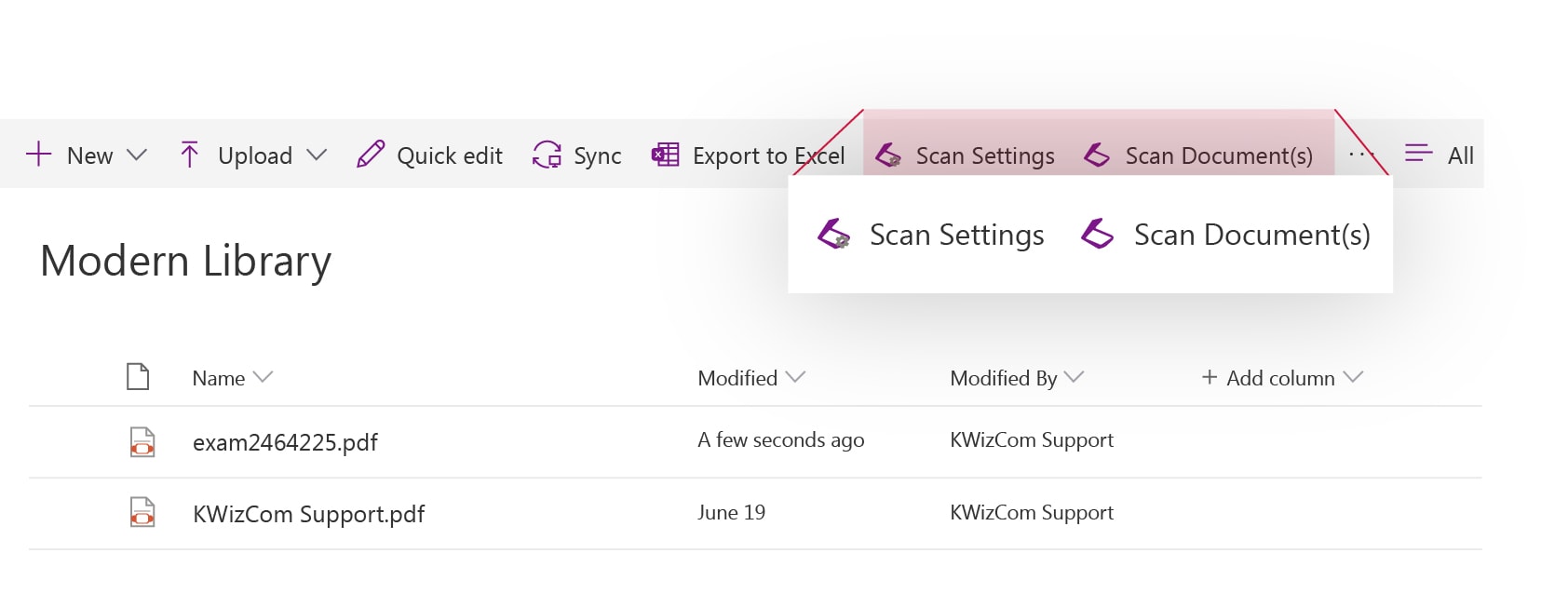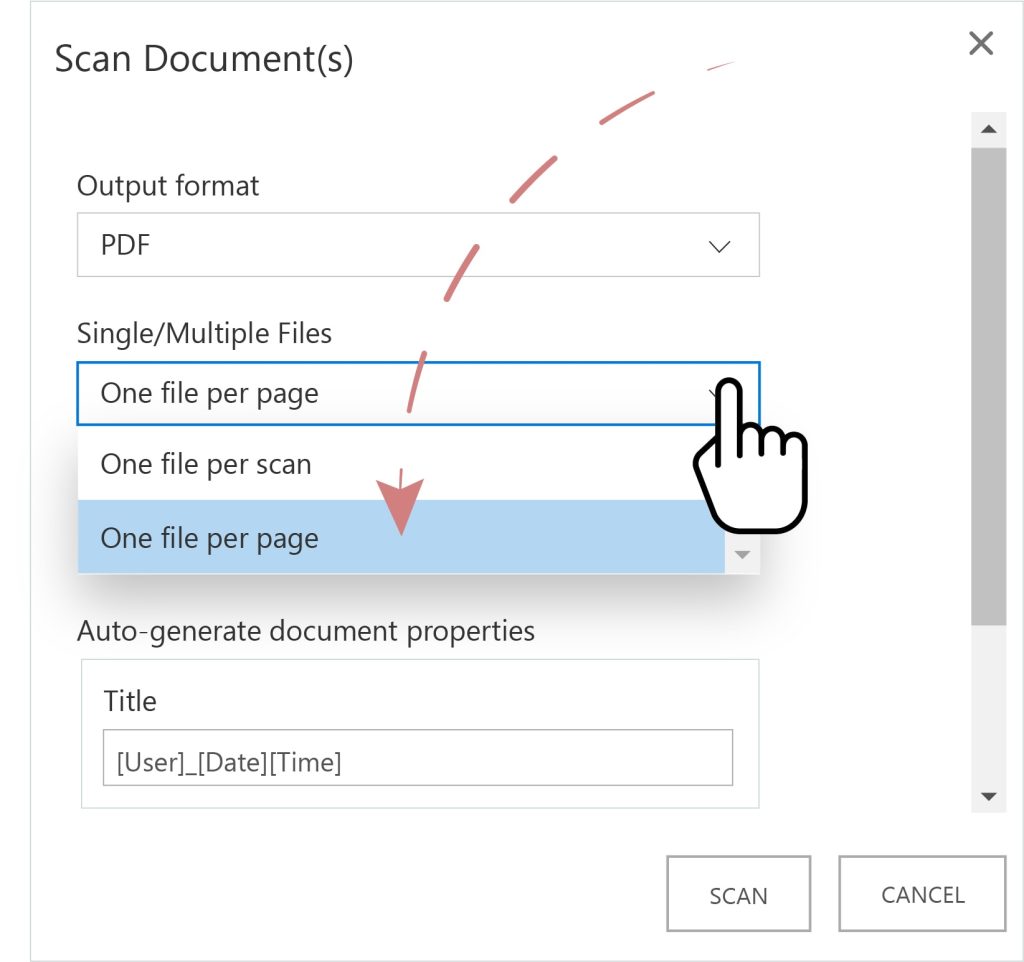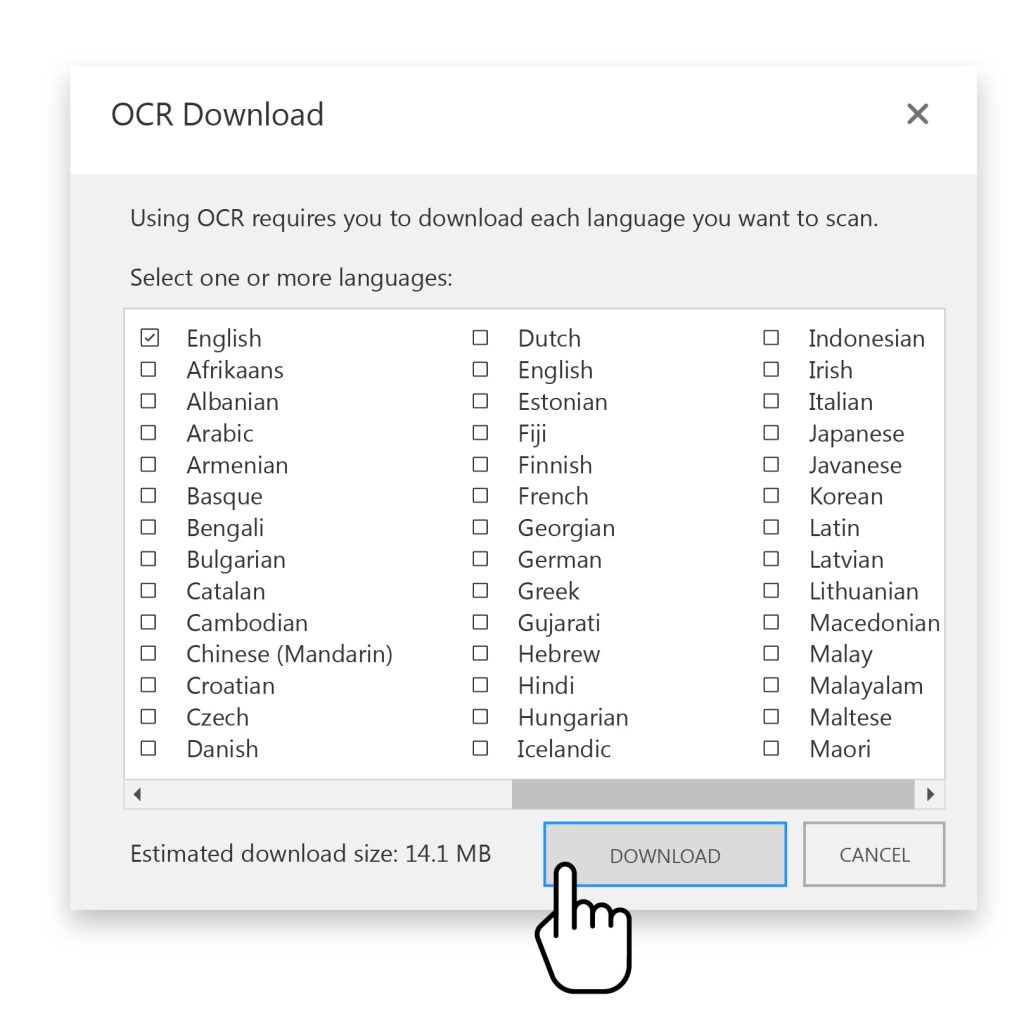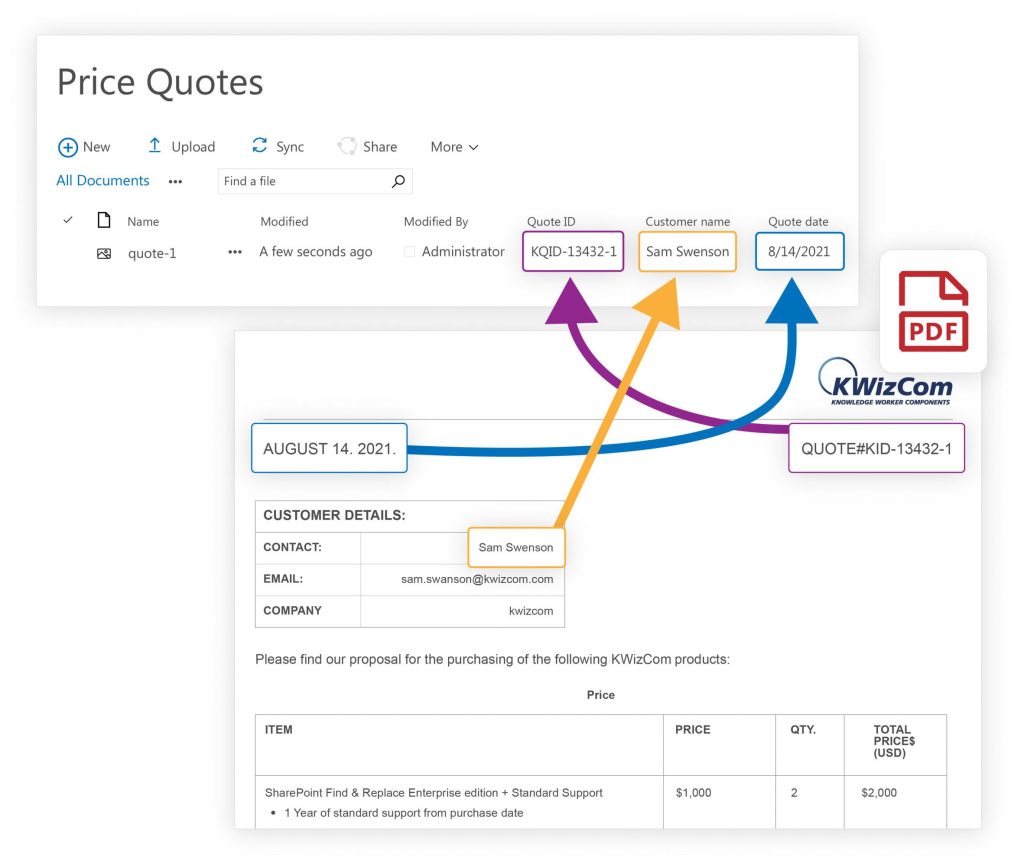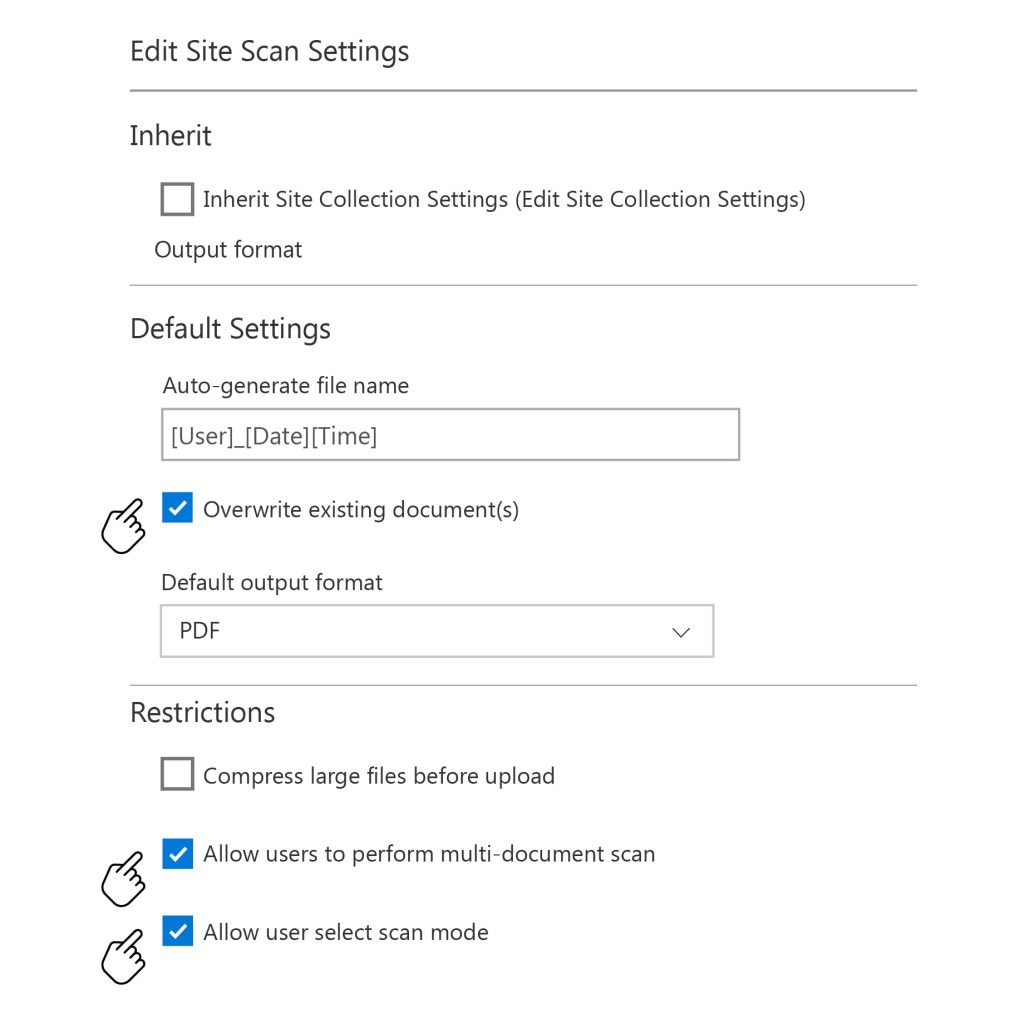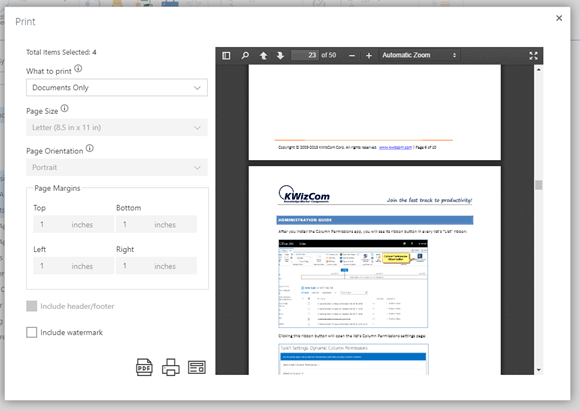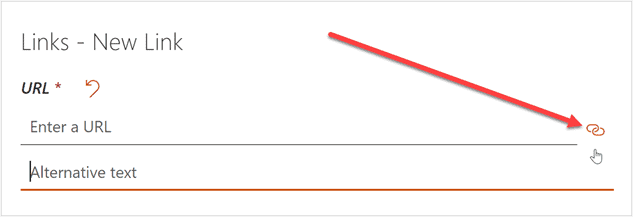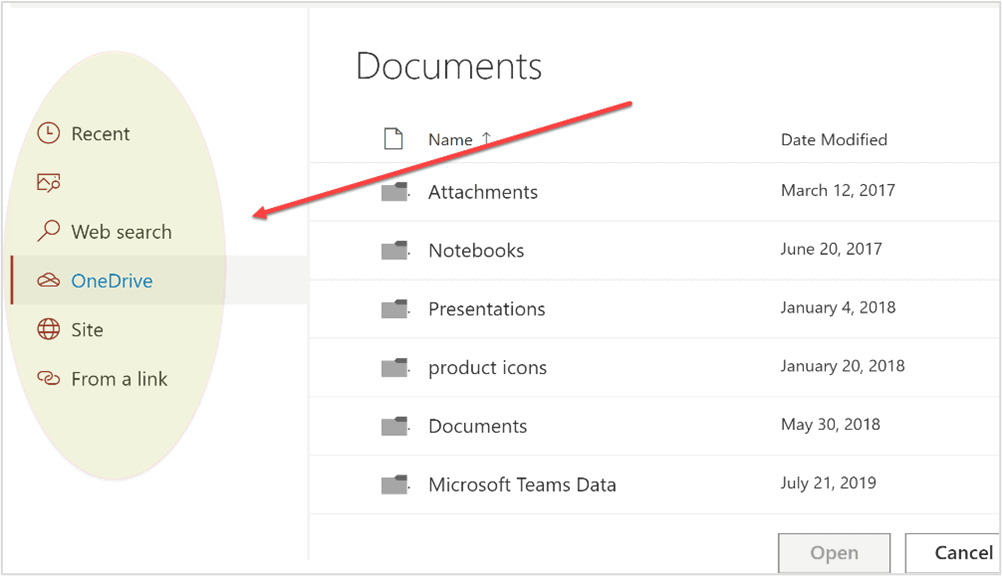Content Management
Tools to help you store, display and manage your daily work tasks
Scan
Scan, OCR & upload documents to SharePoint the easy way!
Available for Microsoft Windows 365 and On-premises.
Many organizations which already decided on moving to paperless information management still find themselves having to manage large amounts of papers on a daily basis. Scanning documents and uploading them to SharePoint is a time consuming process. This requires scanning documents to a local folder, uploading each scanned document and tagging it. As we can see, this process makes it very difficult to store information originated from papers, into SharePoint Online.
KWIZ’s Scan app for Microsoft Office 365 solves the SharePoint scanning challenge by adding the missing “Scan” menus for libraries and lists. Additionally, it enables batch scanning and document tagging. All of these are done in a single click!
SharePoint Scanning allows non-technical users to quickly scan papers into a single or multiple searchable documents, upload the scanned documents and automatically update their properties – all in a single click!
Using integrated scanning menus, you can quickly scan documents into a library without leaving your SharePoint interface or attaching them to a list item. With the multi-lingual OCR, you can easily save your scanned files as searchable PDF files – all designed for non-technical business users!
Quickly scan papers into single or multiple documents, auto-extract property values using zonal OCR & upload the scanned documents to SharePoint – All done in a single click!
Why KWIZ Scan?
-
Seamlessly integrated with SharePoint User Interface
-
Your data never leaves your environment!
-
Enables batch paper scanning to produce multiple documents
-
Multi-lingual OCR (text recognition)
-
Auto-populate document properties with Zonal OCR
-
Super-flexible, configure the Apps to behave according to your company’s specific needs
Integrated in the most natural way to make it simple and easy for SharePoint end-users to scan files into libraries and list attachments.
This is SharePoint-hosted, so none of the customer’s data/documents is transmitted to other cloud servers!
Paper scanning is done on the user’s desktop, using a client component, which is part of KWIZ’s SharePoint Scan.
Need to scan multiple pages and have them saved as separate files?
No problem! Easily configure the way you want to separate the scanned pages into files.
Create searchable PDF documents using the multi-lingual OCR.
Do you need to regularly scan the same type of papers, such as invoices, price quotes or purchase orders?
No need to manually update property values of scanned documents!
Easily map between areas in the scanned paper to property values of the scanned document(s). This allows these values to be automatically extracted and updated in the properties of the scanned documents when uploaded to SharePoint!
With the SharePoint Scan settings page, you can configure various settings that can be inherited from S.C to any specific library.
Convert to PDF/Print
You can now easily select the documents, list items, Wiki pages and attachments, and merge them. PDF file and print!
All done in a single click with the KWIZ SharePoint Print for Microsoft 365!
Choose between documents, list items, Wiki pages, InfoPath web forms, SharePoint publishing pages and attachments and merge them. PDF file and print – all done in a single click!
Why does KWIZ Convert to PDF/Print?
Select the list items or documents and click to merge them into a single, printable PDF document.
As this is a SharePoint-hosted, none of the customer’s data/documents is transmitted to other cloud servers!
PDF conversion is done on the user’s desktop, using a client component, which is part of KWIZ’s SharePoint Print.
Easily configure your printout header and footer to include any data from your printed records, such as a PO number, company logo, print date or any other dynamic data needed.
These settings can be saved in various levels, from S.C to a specific list/library.
As part of KWIZ Forms, you can hide specific fields that you do not want to be visible for some users/groups who print the SharePoint items/forms.
*Requires KWIZ Forms
Datasheet View
Do you struggle with the SharePoint Quick Edit or the SharePoint Grid View? Do you miss the “Excel-like” features of the SharePoint 2010 Datasheet view?
Well, no more! Now the Datasheet view is available using all browsers!
Although the SharePoint Quick Edit view introduced a major improvement by supporting all browsers instead of just IE, it still is not user-friendly and lacks the “Excel-like” capabilities of the SharePoint 2010 Datasheet view.
That is why our team has created the Datasheet view web part for Microsoft 365.
After you install this web part, you will be able to bulk-edit your SharePoint lists using the good old Datasheet view. And this is in addition to the new SharePoint Quick Edit mode.
Features
- True “Excel-like” Datasheet view (same as SP2010)
- Support both classic and modern lists
- Support IE, Edge and Chrome browsers
File Controller
List/library-level control over attached/uploaded file sizes and types!
KWIZ’s SharePoint File Controller works at the list and library level to enforce file size limits and to define which file types can be uploaded. With SharePoint out-of-the-box, these definitions are only available at the web location level.
The File Controller gives site owners more control over files and attachments uploaded by end-users to libraries and lists. Using a simple settings page, you can set up file size and file-types limitations for uploaded files and extensions. This way, you can prevent users from uploading irrelevant files, making libraries and lists much harder to work with.
Features
- Allows configuring max uploaded file size in a list/library level
- Enables configuring allowed or blocked file types in a list/library level
SharePoint Find & Replace
Safely find & replace old URLs and strings in your SharePoint 2013-2019 farm/Office 365 sites
Are you planning to upgrade to a new SharePoint edition or migrate to a new server?
Power users customize hundreds, thousands, or millions of sites with SPD. With thousands of documents that might include hard-coded links to your older SharePoint server, you can fix all these wrong/broken links reliably without losing time on manual fixes.
KWIZ’s SharePoint Find & Replace replaces hard-coded strings in SharePoint.
This administration client tool supports SharePoint 2013-2019 server and SharePoint Online (Microsoft 365). Our SharePoint Find & Replace will scan your SharePoint farm and will replace the existing strings with an updated string of your choosing. The tool includes a “Scan only” mode and a detailed log, enabling the admin to stay in control and easily monitor all string replacements.
Why KWIZ Find & Replace?
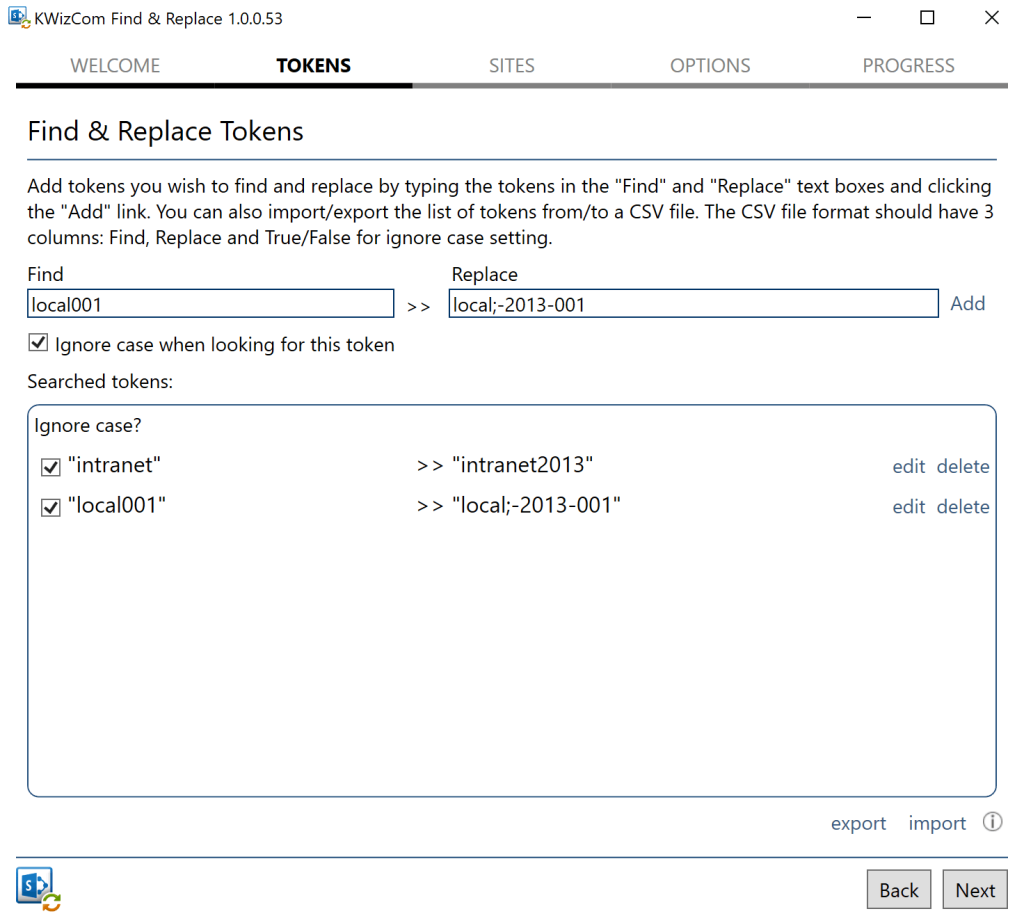
You can also import/export these tokens from/to a CSV file.

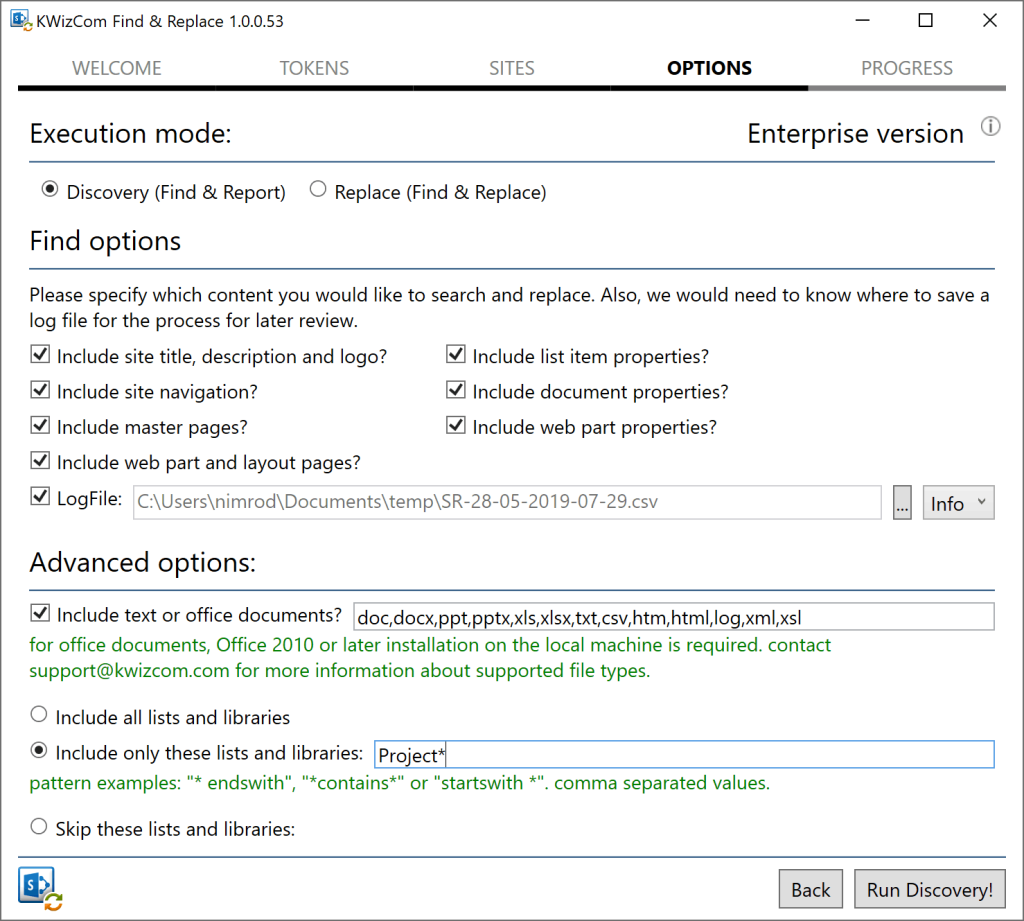
Find only (without actually replacing anything), and Replace.
You can also fine-tune your search by selecting where exactly in SharePoint you want to search for your defined tokens.
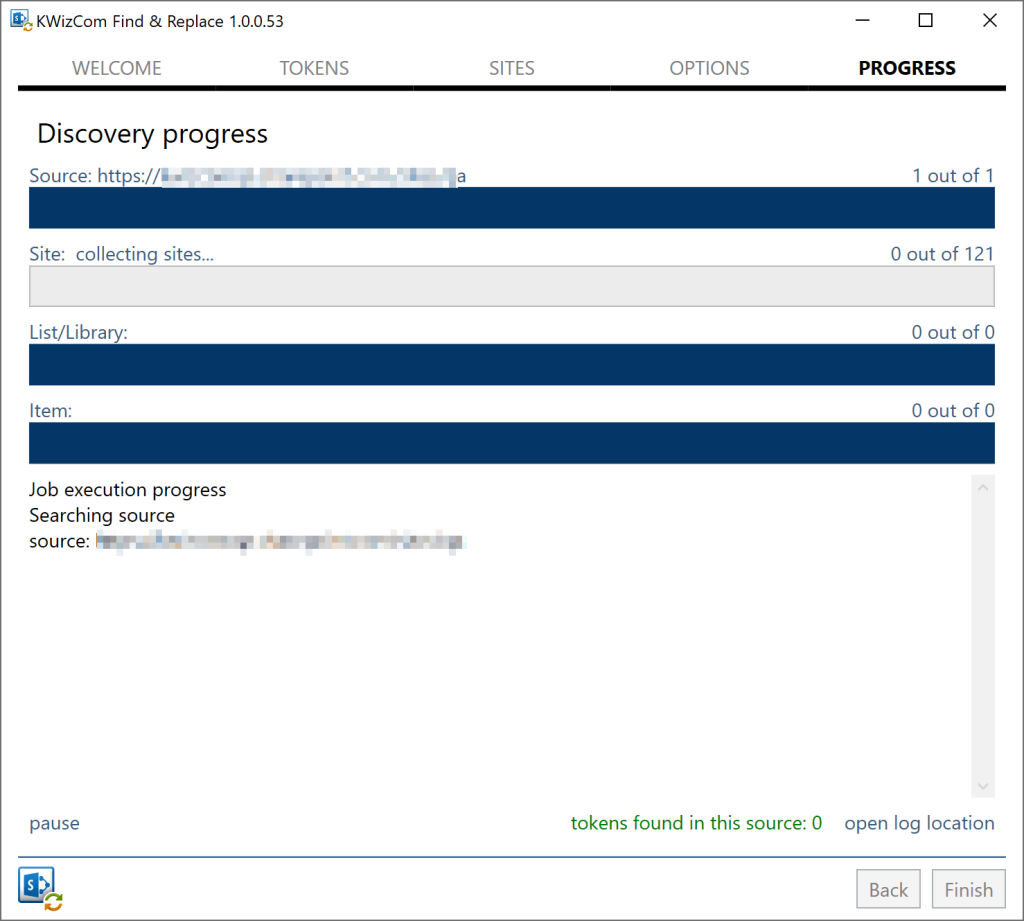
After execution is completed, a detailed log enables you to review where precisely the searched tokens were found and how many string replacements were done.
URL File Picker
SharePoint hyperlinking is made easy with a boosted URL field.
No need to type URLs in the SharePoint “URL” column!
Browse and select the files you wish to link to that are located in various locations with the help of URL File Picker!
There is no need to type URLs in the SharePoint “URL” column!
You can browse and select the files you wish to link to, located in your SharePoint libraries, in windows network drives, or you can upload your required file!
Additional picker icon
See the “Image” field?
Now it has an additional picker icon next to it – click on it!
Pick from various locations
Now pick a resource from numerous available locations:
- OneDrive
- SharePoint site or sites
- Web search
- Recent locations
That’s it!
That is all, you’re done!
You now have a link to the required image or file. No more typing!


